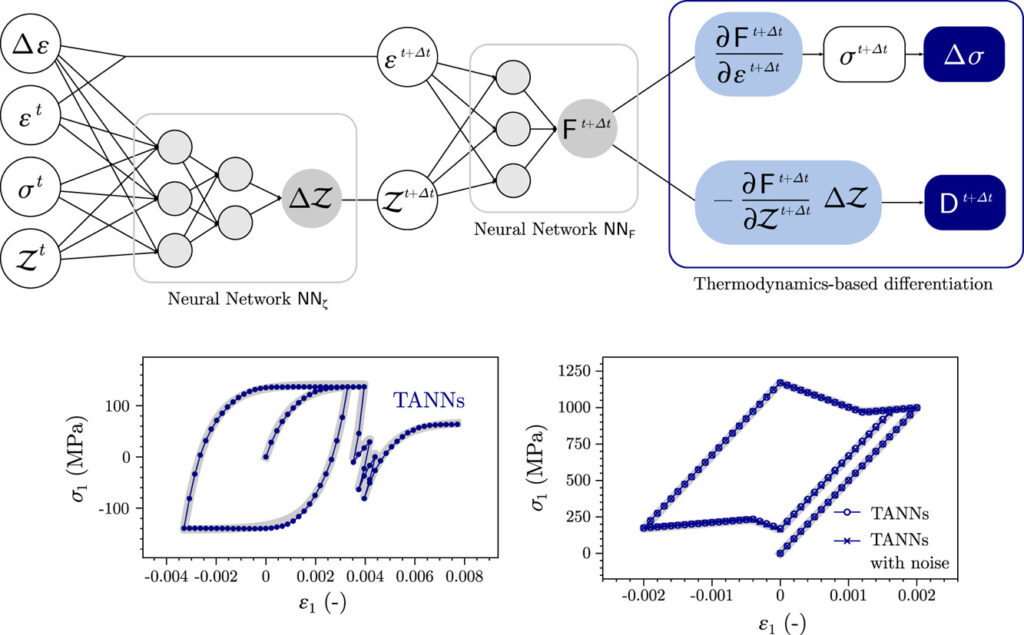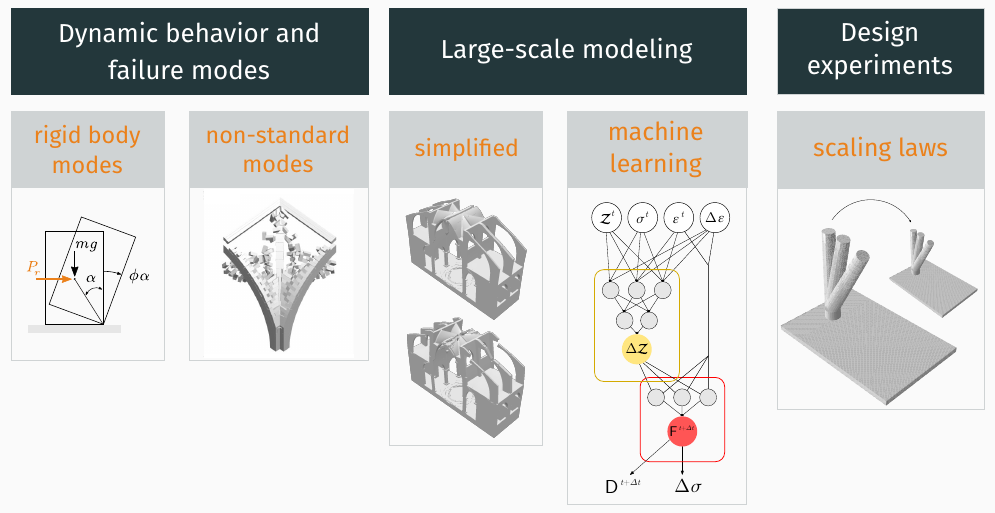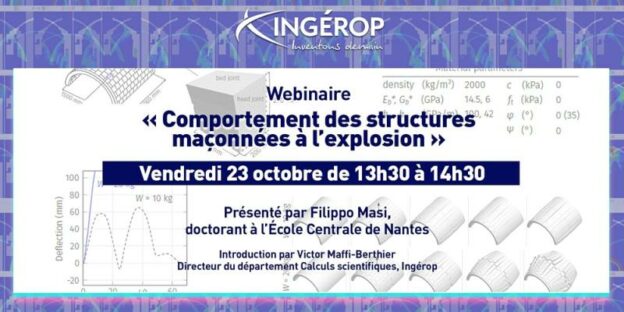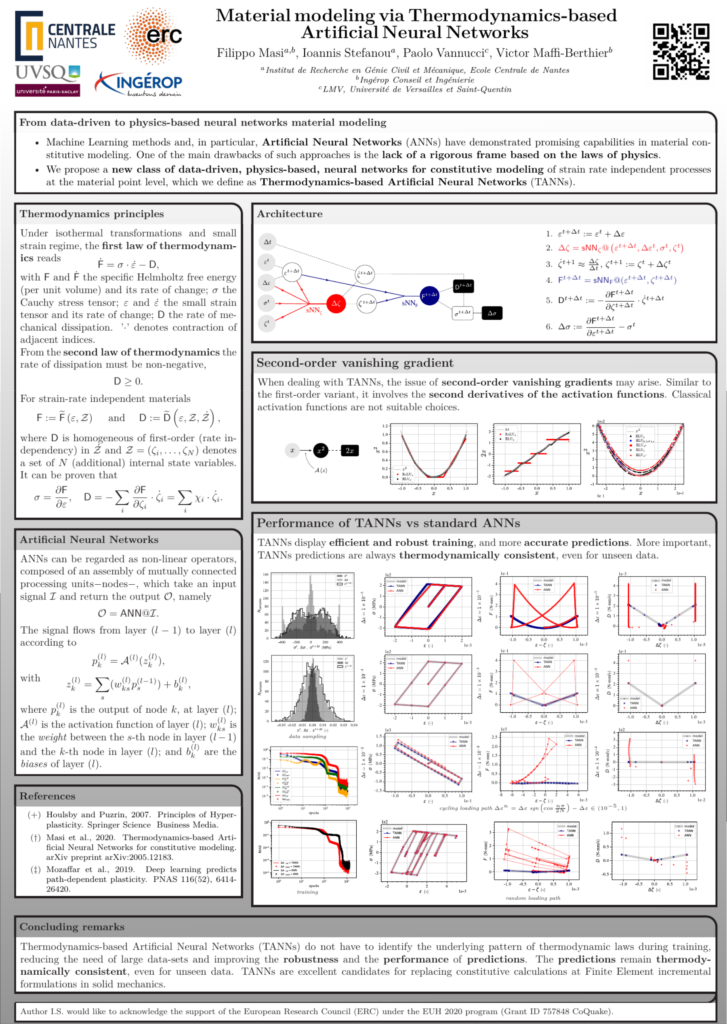Yes, with Thermodynamics-based Artificial Neural Networks (TANN)!
Our new talk on TANN at the Mechanistic Machine Learning and Digital Twins for Computational Science, Engineering & Technology conference (September 26-29, 2021, San Diego).
TANN are a novel deep learning approach for modeling complex materials, by enforcing the universal laws of thermodynamics. The method is accurate, fast and scalable, and will enable, in the near future, to derive reliable quantitative predictions of the fault friction (in the ERC grant CoQuake) and of the response of structures under blast loading. TANN allow to perform large scale simulations of intricate systems in a virtual, data- and physics-driven environment, that fits on a laptop.
Find out more about TANN and our developments:
- Masi, F., Stefanou, I., Vannucci, P. and Maffi-Berthier, V., 2021. Thermodynamics-based Artificial Neural Networks for constitutive modeling. Journal of the Mechanics and Physics of Solids, 147, p.104277.
- Masi, F., Stefanou, I., Vannucci, P. and Maffi-Berthier, V., 2020, July. Material modeling via Thermodynamics-based Artificial Neural Networks. In Workshop on Joint Structures and Common Foundations of Statistical Physics, Information Geometry and Inference for Learning (pp. 308-329). Springer, Cham.
- Masi, F. and Stefanou, I., 2021. Thermodynamics-based Artificial Neural Networks (TANN) for multiscale modeling of materials with inelastic microstructure. arXiv preprint arXiv:2108.13137.




